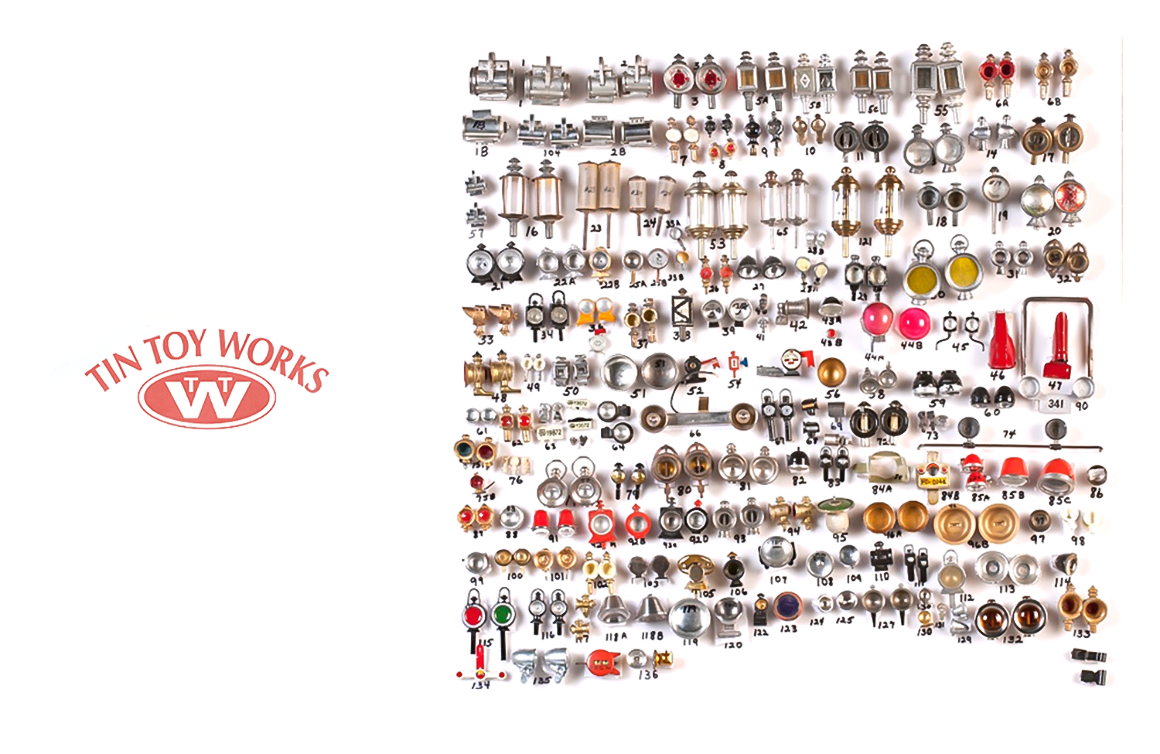How did Tin Toy Works come to be?
Barbara: Joe repaired model railroad trains from Lionel and American Flyer as a pastime. That work evolved into a hobby shop called Hobby Corner, where we repaired and sold model trains and other items. That was in the late 1960s. Joe didn’t love the retail side of the business and we got so much repair work – which Joe loves – so we closed the retail business to focus on repairs and preservation.
Joe: I’m a die maker by trade; that’s where my interests lie. We make our own tools, molds, dies, and over 6000 parts. We produce the largest selection of reproduction tin toy parts in the world.

What types of toys do you restore?
Joe: What we do is not necessarily restoration. We want to maintain as much of an object’s original integrity as possible. We do a lot of work on pre-turn-of-the-century, German-made toys from manufacturers like Bing, Marklin, Schuco, and S. G. Gunthermann – which is what I collect. Germany was the toy capital of the world at one point. The United States had Louis Marx and Company and many other companies, of course.
Barbara: We work on all kinds of friction, battery operated, wind-up, and gear toys like trains, cars, robots, animals, and rockets. I too collect; I have a collection of Easter-related tin toys from the turn of the century into the 1960s.

Who is your customer?
Barbara: We have customers all over the world. About 60% are collectors, museums, and auction houses. The other 40% are dealers; of course, dealers are often collectors themselves. Our business is generated mostly by referrals. We also advertise in Antique Toy World magazine.

What is one of your favourite restoration projects?
Joe: Oh, we probably won’t say. We respect the privacy of our customers. Every day, we see something we haven’t seen before and every day is a new challenge.

Why is it important to keep the history of toys alive through preservation?
Barbara: Toys of the past are very special and had been very expensive to buy during their time. While the kids of today might be bored stiff by them, parlour toys were often reserved for play during special occasions like Christmas or a birthday. They were prized objects within the household.
Joe: Toy and model making is an art; we want to preserve the history of toy manufacturers and their objects. It’s no less important than preserving historical architecture.

Learn more about Tin Toy Works on their website.













